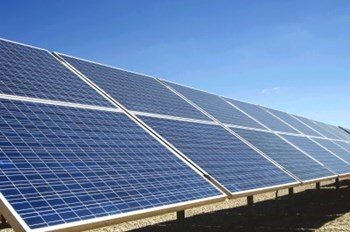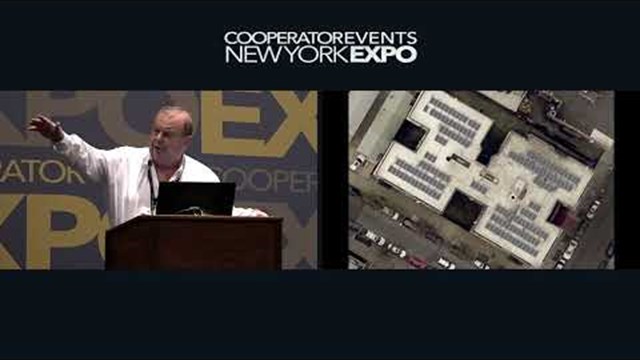
Sobering studies published last month by the International Energy Association and the National Petroleum Center suggest that the supply of traditional energy sources may not meet demand by 2015, strong evidence yet again that electric costs will continue to climb.
Members of co-op and condo associations have seen their maintenance fees rise as a result of utility increases. Builders as well are realizing that utility and associated maintenance costs can greatly impact the salability of apartments and condos.
Alternative energies like solar are increasingly recognized as a viable energy source. Recently Wal-Mart announced their plan to install solar energy systems at 22 of their store locations. Solar has gone mainstream.
When viewed over a seven to ten-year term, solar's economics are compelling. Investing in a system will produce electricity at a fraction of today's rates for in excess of thirty years, resulting in considerable energy savings and environmental benefits.
Incentives for Solar
Both New York and New Jersey have rebate incentive programs to substantially reduce the cost of installing solar electric systems. A combination of state and federal programs can cover up to 50 percent of the cost of the system.
The federal "Credit for Residential Energy Efficiency Property" can provide each shareholder in a co-op or condo with a tax credit of up to 30 percent of his or her prorated share of the net cost of the system after state rebates. While a shareholder subject to the Alternative Minimum Tax cannot take the credit, it can be carried forward over many years.
In New York, the current rebate incentive is $4 per watt for systems producing up to 25kW, and $3 per watt for additional watts up to a maximum of 50kW. In practice, 50kW is enough to supply the energy needs of at least seven families of four, or the common space electric needs of a large co-op complex. The rebate for a 50kW system would be $175,000.
In New York, favorable financing is also available. The Energy Smart Loan Fund currently subsidizes the interest rate for loans from dozens of lenders, reducing the interest rate by 6.5 percent for specified energy-related improvements such as solar electric. These lower interest rates are for multi-family units served by Con Edison, with a maximum loan of $5,000 per residential unit up to a maximum of $2.5 million total. For example, if the typical commercial loan rate were 8 percent, your association would only pay a 1.5 percent interest rate.
In New Jersey, the current rebate incentive (undergoing change at press time) is $3.50 per watt up to 10,000 watts, with declining payments for large systems up to 700,000 watts. In addition, through at least 2020, the "green tag" or New Jersey's Solar Renewable Energy Credit (SREC) program pays the solar electric system owner an annual fee (presently averaging $0.25/kWh) for their production of "green" energy, affording an average return on system cost of 7.2 percent annually, over 10 years. In addition, there is an average annual return of 6.8 percent in energy savings, for a total of 14 percent per annum.
Surprising Cost Benefits of Solar
A single solar module can cost up to $1,000. Each solar panel is capable of producing between 140 to 200 watts of electricity. A 50kW system for instance, the largest size subject to rebate in New York, requires over 250 modules and can cost about $480,000 fully installed, depending on the type of installation. Once the project is approved, the state solar program will cover $175,000 of this cost. Federal solar tax credits of 30 percent of the net cost could total an additional $91,500 in tax savings. Savings in energy costs, at Con Ed's current rates, would run about $12,500 per annum.
In New Jersey, installations have been as large as 700 kW, capable of supplying about 100 units. If the rooftop space is insufficient, 1.5 acres of open field could accommodate a 1,400-panel, ground-mounted array. The system cost would be about $5.6 million, less a state rebate of $2 million and a federal tax credit of up to $1.08 million. The annual savings in energy costs, at PSEG's current rates, would run about $115,000. SREC payments would be in excess of $200,000 annually.
Challenges for Going Solar
The prospects for solar in co-ops and condos are not without their challenges. Moving forward takes conviction and perseverance, even more than a typical association faces in seeking to build consensus for any major capital improvement or maintenance project.
There are limits to what can be done in high-rise buildings. The average solar panel measures over 10 square feet. Panels need sun and they need space. An average suburban house has enough roof space for solar panels sufficient to provide the electricity for a family of four. With every additional floor or living unit under a roof, the proportion of energy that the system will provide will be diminished. But most high-rises in New York have enough roof space for the maximum rebatable system, 50kW, even if it only supplies a portion of electric use, say for common areas.
A large solar array system requires a sizable capital investment, and associations sometimes choose to finance the system by taking out a loan. In New York, the interest-reduced loans soften the blow. Other financing options exist in both states, such as lease/buy arrangements and Power Purchase Agreements (PPA). With a PPA, the solar company finances, installs, and owns the system, but contracts with the building owner to sell the electricity at defined prices over a 20 year term.
Despite these challenges, solar energy is full of promise, even in existing co-ops and condos. Fortunately there are solar consultants and installation companies that are capable of addressing these issues and handling all design and permitting.
A properly designed solar energy system can supply electricity for 30 to 40 years. In the increasing uncertainty of the energy markets, a reliable long-term source of energy at a fixed cost is an attractive option.
George Engelbrecht is the co-op and condo specialist at The Solar Center, the largest solar installer in the tri-state region.






8 Comments
Leave a Comment